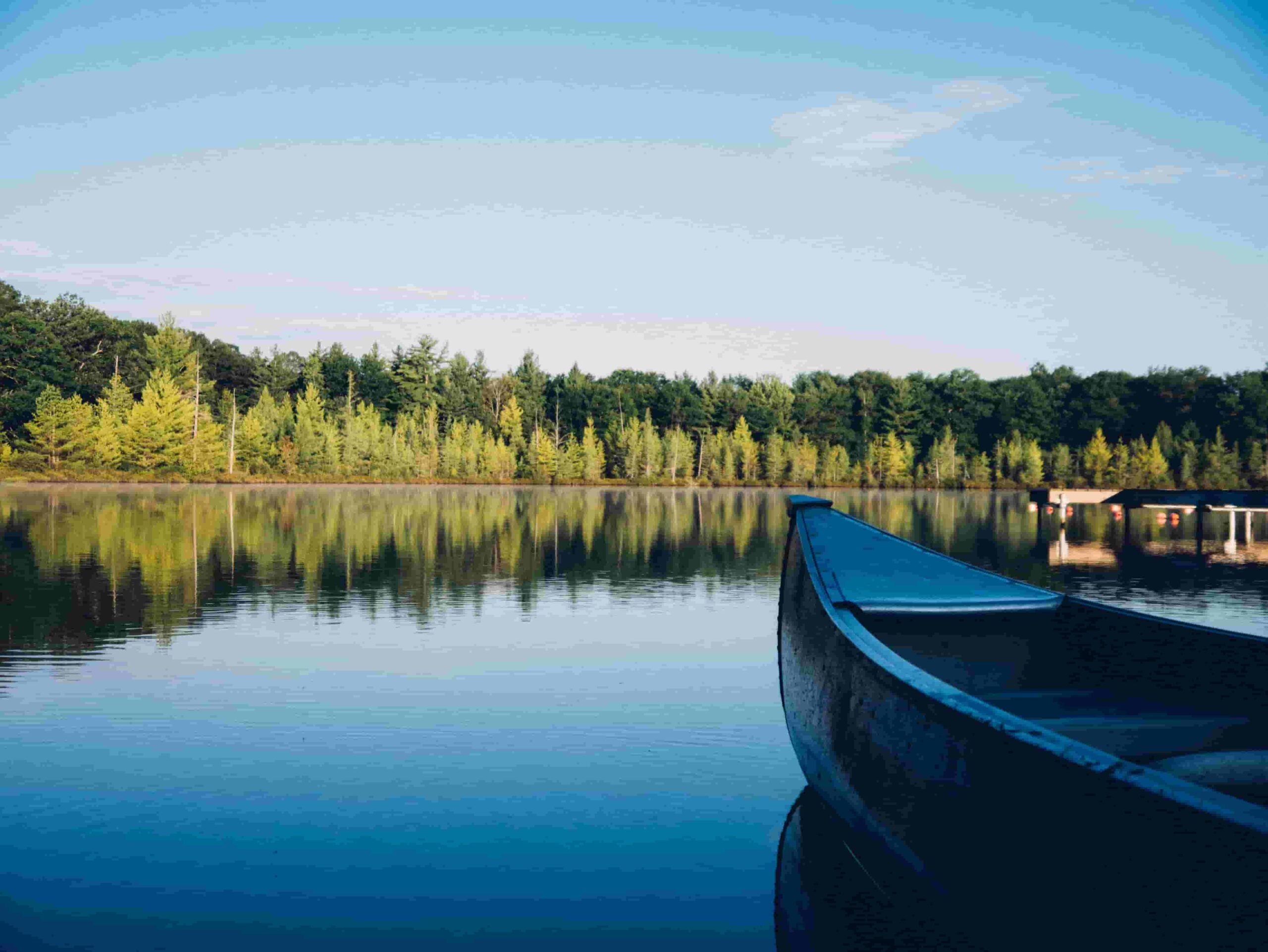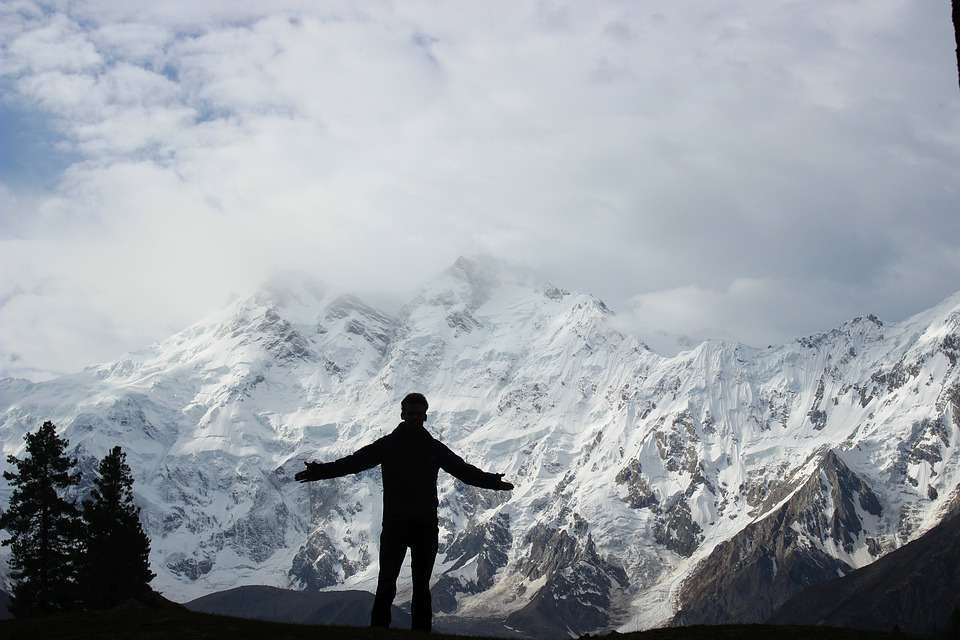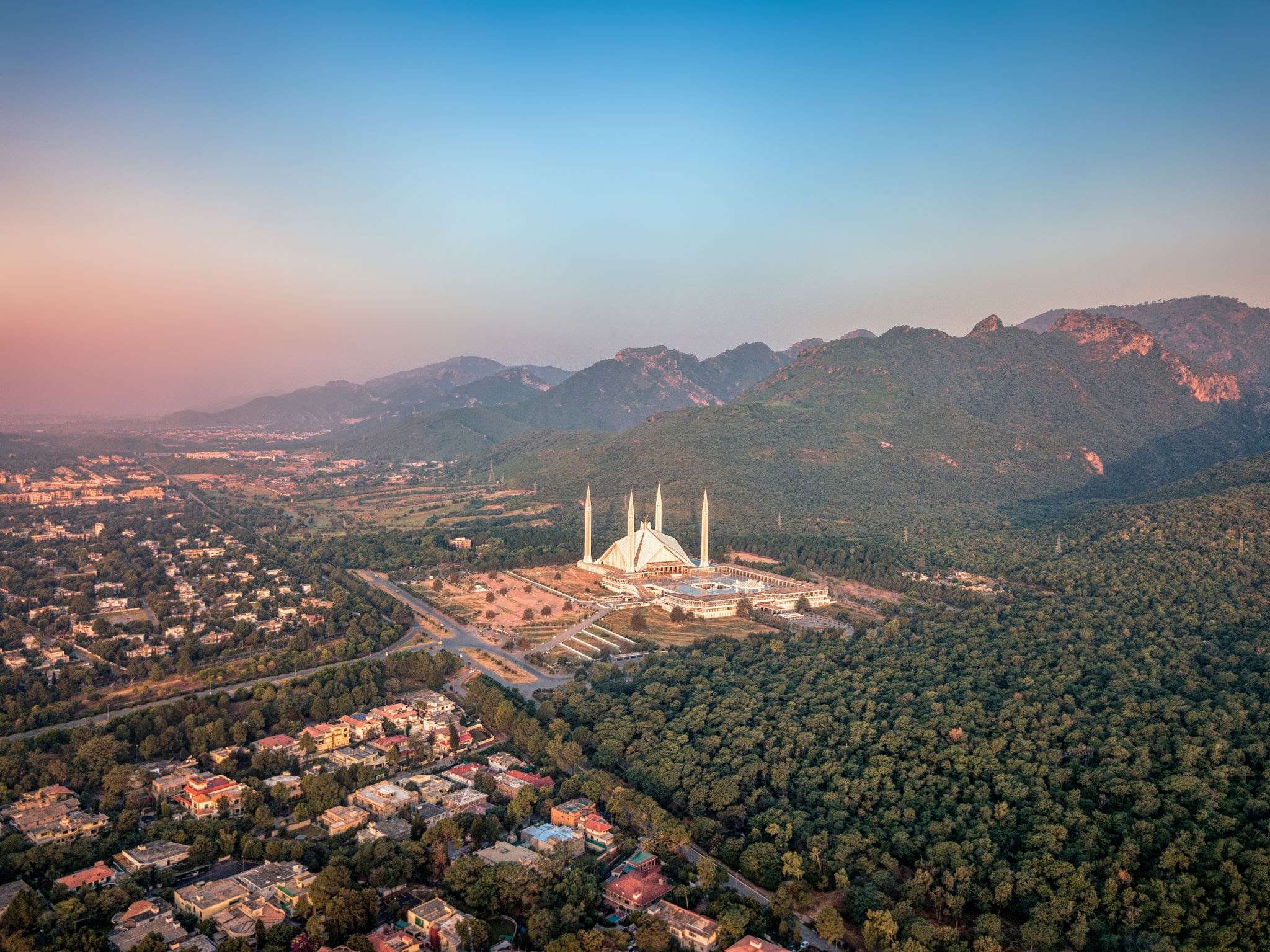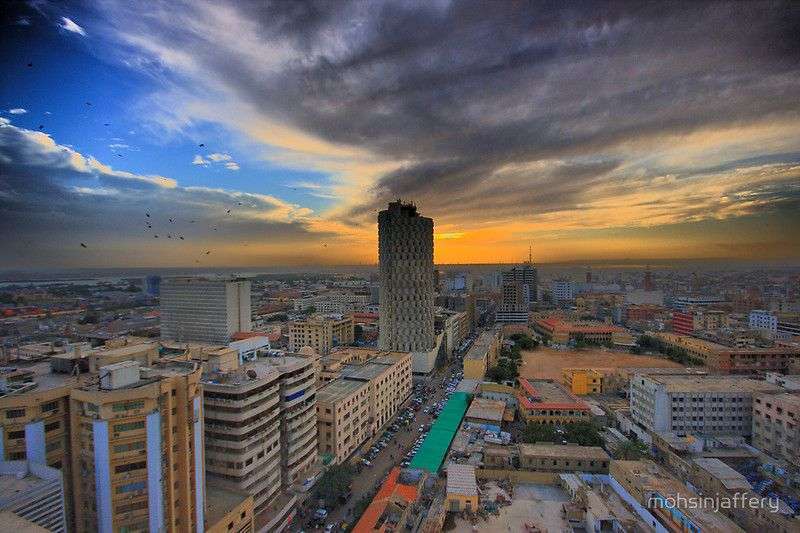Are you looking for the best famous places in Skardu in 2023? Skardu, a haven of natural beauty, is located deep within Pakistan’s Gilgit-Baltistan area and is awe-inspiring to anybody who visits thanks to its magnificent scenery. Skardu proudly displays a variety of renowned sites that entice travelers from all over the world with its towering mountains, tranquil lakes, and historic monasteries. In this post, we’ll take a virtual voyage to discover some of Skardu’s most famous sights, each of which offers a unique window into the region’s wealth of natural and cultural resources.

1. Shangrila Resort – “A Slice of Paradise”
The renowned Shangrila Resort, frequently referred to as “A Slice of Paradise,” is located in the center of Skardu’s breathtaking surroundings, tucked away within a verdant haven of natural beauty. This resort is an example of how human inventiveness and the alluring beauty of the surroundings can coexist harmoniously. Let’s explore the magical Shangrila Resort and learn how it came to have such a wonderful reputation.
Setting and Location:
Shangrila Resort enjoys a prime location on the shores of the tranquil Lower Kachura Lake, cradled by the grandeur of the surrounding mountains. This idyllic location provides a serene backdrop that enchants visitors from the moment they set foot on the premises. The resort’s strategic positioning ensures breathtaking views and a seamless fusion of nature’s splendor with human-made comforts.
Aesthetic and Architecture:
The Shangrila Resort’s architectural style is evidence of its dedication to maintaining the surrounding area’s natural beauty. The resort can harmonize with the landscape rather than dominate it because of the structures’ seamless blending with the surroundings and the use of native stone and wood. For those looking for tranquility amid nature, the soothing aesthetics provide a peaceful haven.
Accommodation:
The resort offers a range of accommodations, from cozy cottages to luxurious suites, each thoughtfully designed to provide comfort while maintaining a connection to the outdoors. Guests have the opportunity to wake up to stunning views of the lake and mountains, creating an immersive experience that lingers long after their stay.
Lower Kachura Lake:
Unquestionably, the Lower Kachura Lake, which the resort overlooks, is its crowning glory. The tranquil atmosphere and breathtaking views can be experienced by taking leisurely boat excursions on the crystal-clear seas. A gorgeous view that looks like it may have come from a dream is created when the lake reflects the nearby hills covered in pine trees.
Garden of Shangrila:
The magical “Garden of Shangrila” is located on the resort’s grounds. The variety of floral plants, attractive trees, and vivid blossoms in this meticulously managed region add to the paradisiacal ambiance. Visitors can unwind, enjoy strolls, and breathe in the aroma of nature there.
Culinary Delights:
The resort’s culinary options are evidence of the mix of regional cuisines and cuisine from around the world. While dining in front of the stunning scenery, guests can savor a range of delicacies that highlight the area’s culinary tradition.
Cultural Connections:
The Shangrila Resort pays attention to the area’s rich cultural heritage by incorporating regional artwork and handicrafts into its design. The chance to interact with local traditions and customs gives visitors a well-rounded experience that goes beyond just beauty.
The Skardu Fort is perched majestically on a hill overlooking the town of Skardu and acts as a staunch defender of the area’s extensive historical past. This architectural wonder thought to have been built in the eighth century, not only represents the tenacity of the past but also provides enthralling insight into the region’s cultural mosaic.
Architectural Significance:
The Skardu Fort’s architecture is a testament to the craftsmanship and architectural prowess of its time. Constructed with local stones and wood, the fort seamlessly blends into its natural surroundings while exuding a sense of grandeur. Its strategic hilltop location not only provided a vantage point for observing the landscape but also served as a defensive stronghold.
Historical Heritage:
Over the centuries, the Skardu Fort has witnessed the ebb and flow of history, standing as a silent witness to the region’s evolution. Its walls have seen the passage of conquerors, traders, and pilgrims who traversed the ancient Silk Road. The fort has played a pivotal role in safeguarding the region against invasions, showcasing its significance in maintaining peace and stability.
Architectural Elements:
The Skardu Fort’s architecture is a blend of various influences, reflecting the diverse cultural interactions that have shaped the region. Its intricate carvings, arched doorways, and ornate windows showcase a fusion of Tibetan, Islamic, and Central Asian architectural styles. The fort’s interior is characterized by winding passages, courtyards, and chambers, each with its unique purpose and history.
Cultural Museum:
Currently, the Skardu Fort serves as a cultural museum, displaying a wide variety of antiques, relics, and exhibits that illustrate the area’s history and traditions. Visitors can examine exhibits that include everything from historical papers to antique weapons and costumes, providing a thorough look into the past.
Panoramic Views: Apart from its historical significance, one of the most compelling aspects of visiting the Skardu Fort is the panoramic views it offers. From its elevated position, visitors are treated to breathtaking vistas of the Indus River, the surrounding valleys, and the majestic mountains that envelop the region.
Preservation Efforts: Efforts have been made to preserve and restore the Skardu Fort to ensure that its historical legacy remains intact for future generations. The fort’s conversion into a museum not only helps in educating visitors but also generates awareness about the importance of cultural preservation.

2. Shigar Valley – Oasis of Serenity:
Our journey takes us deeper into the tapestry of Skardu’s marvels, leading to the entrancing Shigar Valley. Celebrated for its verdant orchards, tiered fields, and quaint hamlets, the valley presents a serene haven away from the hustle and bustle of everyday life. The Shigar Fort metamorphosed into a heritage hotel, serves as a gateway to the awe-inspiring landscapes that lie beyond.
Natural Splendor:
Shigar Valley is home to a stunning natural setting distinguished by its lush splendor and imposing mountains. Terraced farms with a gentle slope will greet you as you pass through this valley, which is framed by the impressive Karakoram Range. The Shigar River meanders across the valley, bringing a sense of tranquility to the area.
Fruit trees and flora
The lush orchards that dot the Shigar Valley’s terrain are one of its distinguishing characteristics. Throughout the valley, fruit-bearing trees like apricot, apple, and walnut trees produce a colorful mosaic of colors. The orchards come alive with shades of red, orange, and green during the fruit-bearing season, providing a visual spectacle that is as delicious as it is gorgeous.
Charming Villages:
Scattered across the valley are charming villages that offer a glimpse into the traditional lifestyle of the region’s inhabitants. The villages are often adorned with wooden houses, intricate carvings, and intricately designed mosques. Local warmth and hospitality enhance Shigar Valley’s allure, fostering a welcoming connection between visitors and the community.
Shigar Fort – A Historical Gem:
Iconic Shigar Fort in Shigar Valley is an architectural marvel and a window to the past. Built more than 400 years ago, this fort is a testament to the region’s rich history. The fort’s intricate design, detailed woodwork, and majestic presence make it a must-visit attraction. Shigar Fort now serves as a heritage hotel, blending past grandeur with contemporary comforts for a unique experience.
Cultural Riches:
Shigar Valley is a cultural heritage repository in addition to being a refuge of natural beauty. The inhabitants’ way of life is strongly influenced by the native Balti culture.
Explore the local lifestyle, engage with artisans crafting antiques, and participate in cultural celebrations, showcasing the culture’s vibrancy.
Adventure and Exploration:
For adventure enthusiasts, Shigar Valley offers a range of activities. Trek picturesque trails, and discover hidden waterfalls—ample chances to immerse in the area’s natural wonders await. The valley serves as a gateway to the Karakoram Range’s higher reaches, a base for treks to renowned peaks.
3. Skardu Fort – Guardians of History:
Perched atop a hill overlooking the town of Skardu in the Gilgit-Baltistan region of Pakistan, the Skardu Fort stands as a resilient sentinel of history, weaving together centuries of cultural significance and architectural prowess.
Historical Significance:
The Skardu Fort thought to have been constructed in the 8th century, is evidence of the area’s long history. It served as a significant stronghold for the Balti monarchs due to its advantageous placement along historic trade routes. It has experienced a variety of historical occurrences over the years, from regional dynasties to foreign invaders, all of which have left their mark on the fortress’s walls.
Architectural Marvel:
The fort’s architectural design reflects the influences of various cultures that have graced the region. Its construction is a fusion of Tibetan, Persian, and Central Asian architectural styles, showcasing the assimilation of diverse artistic traditions. The imposing stone walls, intricate wooden balconies, and ornate detailing evoke a sense of grandeur that transports visitors back in time.
Layout and Features:
The layout of the fort is a tasteful fusion of practical areas and decorative components. It consists of several courtyards, each with a different function. The exterior walls are embellished with finely carved wooden balconies and windows, showing a mastery of carpentry. Visitors will come across rooms that originally served as royal residences, guard posts, and storerooms as they wind their way through the fort’s maze-like hallways, providing them with a glimpse into daily life in the past.
Panoramic Views:
One of the most remarkable aspects of the Skardu Fort is its commanding panoramic views. From its elevated position, the fort offers breathtaking vistas of the Indus River winding through the valleys and the towering peaks of the surrounding mountains. These vistas not only underscore the fort’s strategic importance but also create a breathtaking backdrop that immerses visitors in the region’s natural splendor.
Cultural Heritage Preservation:
To maintain its historical and cultural relevance, the Skardu Fort has recently undergone considerable repair work. It now stands as an active reminder of the area’s past and welcomes guests to explore its hallways and patios. Now a museum, the fort showcases artifacts, manuscripts, and art, offering insights into the area’s history and culture.
Visiting the Skardu Fort:
For travelers and history enthusiasts, a visit to the Skardu Fort is an opportunity to step into the annals of time. Exploring its chambers, ascending its watchtowers, and tracing the path of its history-rich walls is a journey that unveils the tales of battles, conquests, and the people who once inhabited its confines.
4. Satpara Lake – A Reflection of Tranquility:
Satpara Lake, a glacial marvel ensconced by snow-clad peaks, stands as a visual masterpiece. As Pakistan’s second-largest freshwater lake, it not only quenches the region’s thirst but also offers an idyllic spot for boating and fishing. The limpid waters and awe-inducing vistas render it a photographer’s paradise and a sanctuary for enthusiasts of the natural world.
Location and Landscape:
The elevation of Satpara Lake is roughly 2,636 meters (8,650 feet) above sea level. The lake’s beautiful, turquoise waters reflect the beauty of the surrounding scenery, which is framed by snow-capped mountains and lush meadows, producing a breathtaking scene that perfectly encapsulates serenity.
Glacial Origin:
The origins of Satpara Lake trace back to the melting glaciers of the towering Himalayas. These glaciers contribute to the lake’s freshwater, resulting in water that is not only crystal-clear but also incredibly refreshing. Glacial origins lend uniqueness to the lake’s beauty, a testament to nature’s ever-changing dynamics.
Natural and Recreational Importance:
Beyond its aesthetic appeal, Satpara Lake plays a crucial role in the region’s ecosystem. It serves as a significant source of freshwater, supporting both local communities and the diverse flora and fauna of the area. Additionally, the lake’s enchanting ambiance has made it a popular destination for tourists seeking solace amidst nature’s grandeur.
Boating and Fishing:
The welcoming waters of Satpara Lake, which are ideal for boating, are one of its main draws. Renting rowboats or paddleboats allows visitors to explore the lake’s breadth and take in the breathtaking vistas from a different vantage point. It is a wonderful experience to glide across the clear waters with gorgeous mountains in the background.
In Satpara Lake, fishermen can also find shelter. Because it is home to a variety of fish species, the lake is a great place for anglers looking for a relaxing day of fishing in a serene setting.
Photography Paradise:
For photography aficionados, Satpara Lake is nothing short of a dream. The mirror-like surface of the lake reflects the towering peaks and changing hues of the sky, offering countless opportunities for capturing postcard-worthy snapshots. From sunrise to sunset, every moment brings a new interplay of light and color, creating a captivating canvas for photographers.

5. Khaplu – A Cultural Jewel:
Our sojourn finds its culmination in Khaplu, an undiscovered gem renowned for its timeless allure and cultural legacy. The Khaplu Palace, a resplendent edifice, now transformed into a hotel, extends an opportunity for guests to experience the grandeur of yesteryears. Wandering through the quaint byways and engaging with the hospitable locals, a profound connection to the region’s cultural tapestry takes shape.
Historical Roots:
History-wise, Khaplu has a long history that is entwined with the Silk Road trade routes that once passed through the region. Khaplu developed into a melting pot of cultures, ideologies, and customs as an important stopping point for traders and visitors. The town’s layout and architecture are a reminder of its strategic significance as a commercial hub.
Khaplu Palace: A Living Testament:
At the heart of Khaplu’s cultural legacy stands the magnificent Khaplu Palace. Built-in the 19th century as rulers’ residence and power hub, the palace now serves as a heritage hotel, offering a glimpse into a splendid past. The intricate woodwork, traditional motifs, and well-preserved chambers provide a glimpse into the opulent lifestyle of the past.
Cultural Diversity:
The cultural landscape of Khaplu is a patchwork of nationalities and influences that have permanently shaped its identity. The town is home to a variety of ethnic groups, including populations of Baltis, Tibetans, and Muslims. Local festivals, celebrations, and rituals that display a peaceful coexistence of cultures represent this diversity.
Balti Cuisine and Handicrafts:
A trip to Khaplu is incomplete without savoring its unique cuisine. The local Balti cuisine, with hearty stews, dumplings, and flatbreads, offers a tantalizing taste journey.
Monasteries and Religious Sites:
Khaplu is a spiritual sanctuary in addition to being a repository of architectural history. Historic monasteries and sacred places dot the town, reflecting the locals’ deeply ingrained spiritual convictions.
Explore spiritual facets at must-see sites like Khaplu Chakchun Monastery and Chaqchan Mosque, showcasing Tibetan architecture’s splendor.
Community and Warmth:
The essence of Khaplu lies in its warm and welcoming community. Locals are known for their hospitality and eagerness to share their stories and traditions with visitors. Engaging with residents provides insight into daily life, culture, and challenges in a changing world.
Preserving the Past for the Future:
Khaplu welcomes the world while preserving its heritage for future generations through deliberate efforts. Preserving sites, promoting sustainable tourism, and documenting stories bolster the town’s resilience and cultural legacy continuity.



